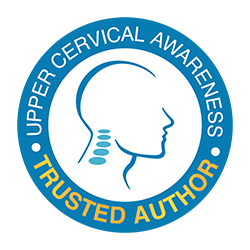How Mt. Dora Family Chiropractic Eliminates Neck Pain | Chiropractor for Neck Pain in Mt. Dora, FL
Hey everybody, I’m Dr. Todd here at Mount Dora Family Chiropractic, and today we’re talking about how we eliminate neck pain. So if you’re watching or reading this, I’m going to presume you’re dealing with or struggling with neck pain of some sort. I just want to discuss a little bit on what do we do here specifically to address these types of conditions.
Health Consultation and Spinal Examination
First thing we’re going to do when anyone comes into our office is start with a consultation just to make sure you’re in the right place, and that we think that we can help you. If so we’ll continue with our exam, and part of that process is we’re going to have you resting on a table so that we can evaluate your spine. Here, we’re looking at the bones, the discs and the ligaments, which really make up your spinal column. We want to find where the areas of restriction are and those tender fibers. Do you have range of motion? Any other issues? We will actually examine the whole spine, of course, and if you have those areas of inflammation that can cause damage or restriction. Another portion of that exam that we’re going to be looking at is neurology. So inside your spine is your central nervous system from your brain in your skull, down through the nerves to all the parts of your body.
Nervous System Stress
So one of the ways we assess that is we look to see if there’s any functional leg length differences? If you do have a short leg we’re going to be looking for where it is coming from. In other words, do you have an actual short leg? Or do you have stress in your nervous system, causing one side of your body to contract, pulling your pelvis up and shortening your leg. Oftentimes, it is overlooked or misunderstood that short leg is from stress right underneath the skull here. There’s a primary area called your Craniocervical Junction, which we find most issues stemming from. So we’ll do a series of neurological tests to determine if that stress is actually causing the short leg and that gives us more clinical indications of what we need to do. Another critical component of what we do here is Paraspinal Thermography. So we’re actually going to use a very specialized instrument to measure the health of the nervous system. This can tell if there’s an imbalance and where the stress is coming from in the structure of the spine. What we do is simply roll up from the base of the neck to the top of the skull and give us a reading that you see on the screen here. And for example, you’d like to see all green dots. And you’ll notice sound and those different colors most notable at the top right, indicating that there’s a great imbalance right compared to left.
The Cone Beam
One of the final things we’ll do in your examination, once we’ve determined that we can help you, is find the root cause of a problem by doing some specialized imaging. What you see here is known as a Cone Beam, CAT scan, or CBCT. Similar to the one your dentists use, we’re going to use it to be analyzing their spine. The Cone Beam allows us to take every different angle and splice to see and find exactly where the problem is in a 3D image. This way we know precisely and exactly how to correct the problem and misalignments. We will often also do what’s called a motion studies when we look for damage in the disc or any trauma or laxity causing instability. From what we’ve determined from your exam findings, and more specifically the precise imaging that we take, we’ll find out exactly the cause of the problem. Once we know that, we make a very tailored adjustment based on your own misalignment and your unique anatomy because everyone’s different.
Blair Upper Cervical Technique
This is called the Blair Upper Cervical technique. That head piece will cockup, and based again on your particular finding, we’ll know right where to contact. It’s a quite gentle technique. So this is a very quick and shallow thrust where the head piece just drops down. So once the head piece drops, the head stops, but the bone will just gently move into its correct position. The cool thing is, once you have that done, you actually get to take a 10 minute nap, power nap to make sure that it all sets in place. The other type of adjusting we do is the Torque Release technique. So let’s explain that. If we’re doing our job, right, your upper cervical alignment should hold for a long time. That doesn’t necessarily mean there’s not going to be subsequent stress or imbalance in the rest of the spine and neck. So we use this instruments called an integrator. The simplest analogy would be like rebooting the computer, because if you’ve got a misalignment that misalignment is going to come from muscles contracting abnormally, pulling your spine out of alignment. Muscles don’t contract abnormally unless there’s an aberration in the brain and nerves telling it to do so. So once we get the nervous system to balance, your muscle and your spine will balance itself out. That is the gist of the torque release.
So we look forward to answering any questions you might have. Feel free to call our office at any time, thanks again!



